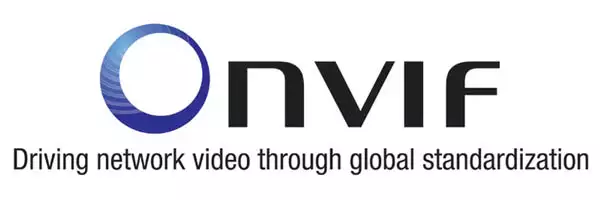Onvif technology
Open Network Video Interface Forum (ONVIF) is a global and open industry forum that introduces global open standards for the interfaces of physical IP-based security products. Due to its great flexibility, Onvif technology has become increasingly popular. This article introduces how it works, which are its greatest benefits and how you can use it in business life.

Benefits of Onvif
- Interoperability: The standards ensure that the products of various manufacturers are interoperable.
- Flexibility: The end-users and integrators can create a system with different products of different manufacturers. Currently there are more than 2500 products compatible with Onvif standards.
- Future-proof: Products from different companies can communicate with each other, therefore you can use the products even if the manufacturer closes their production.
- Quality: There is a quality standard that proves that your product is high-quality and can be trusted.
How Onvif Works
Onvif itself is an organization started in 2008 by Axis Communication, Bosch Security Systems and Sony. The participants worked out a security system standard, called Onvif system to make security globaly standardized. An Onvif system consists on or more IP cameras (that have passed the Onvif standard test), a Local Area Network (LAN), a server with Onvif handler software working as Network Video Recorder (NVR), a broadband Internet connection, and one or more client PCs. There may be further requirements depending on the Onvif service you wish to use. The standard provides great solutions and features for securing an area such as Pan-Tilt-Zoom control, alarm handling, video analytics etc..
As it was mentioned above, Onvif is a standardization that includes:
- IP configuration
- Device discovery
- Device management
- Media configuration
- Real time viewing
- Alarm handling
- PTZ control
- Video analytics
- Security
The PTZ control is one of the IP camera functions. This type of the cameras can be controlled remotely in both directional (physical) and zoom manners. The viewer can trace an event since the IP camera is not fixed. A special type of PTZ cameras is called VPTZ. The Virtual Pan-Tilt-Zoom IP camera is physically fixed but is capable to digitally zoom and pan into a portion of the image. High-resolution recording provides such a good quality that can be further analized if needed. Some IP cameras provide automatic tracking functionality. When the pixels change due to movement within the IP camera's view, the device can focus to the change itself and is capable to move itself to center the pixel fluctuation on the image. This is called motion tracking. The IP camera's most important control possibilities are the following: pan and tilt movements, zooming in and out, opening and closing iris, focusing closer or further.
The alarm handling is a very important feature. When any IP cameras detect motion the system can react to the event. The sensitivity of motion detection is adjustable so it is possible to distinguish the fall of a leave from a possible thief sneaking in. When a detection has happened the system reacts with a predefined action, for example capturing image or video and uploading it to an FTP server or sending it as an e-mail to the security.
The system also has analytic features, for example license plate recognition, counting of people or other objects entering and leaving a building, etc..
What kind of equipment is needed?
Onvif technology requires broadband Internet connection and one or more IP cameras. Further requirements depend on the IP camera solution you wish to use. In this way you may need a computer, a special VoIP telephone or a webserver.
Corporate use of the Onvif technology
Companies use surveillance systems to defend their own properties. A system based on Onvif standards is flexible, cost-effective, smart and future-proof. Standards ensure that there are interoperable products on the market so there will be no compatibility problems between the products of your choice. This increases flexibility and gives greater freedom of choice when it comes to developing an already existing or creating a completly new system. Integrating a new equipment into the system takes only a little time. In addition to security possibilities the video analytics functionality (with its counting, detection, etc. features) provides a powerful marketing tool as well.
